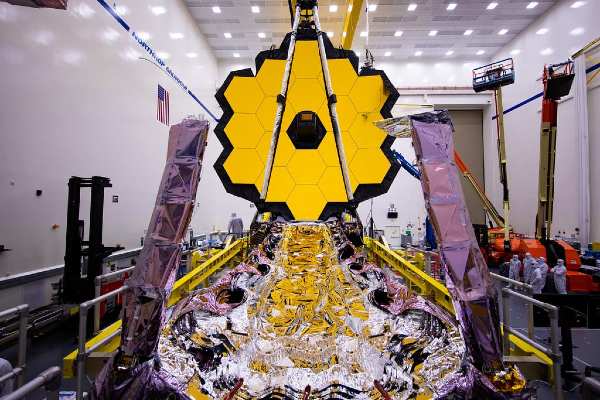The spacecraft bus is responsible for providing the necessary support functions for the James Webb Space Telescope Observatory’s functioning. A top shot of the bus may be seen on the left.
6 important subsystems are housed on the bus:
Attitude Control for Electrical Power, Subsystems Propulsion Subsystem, Thermal Control Subsystem, Communication Subsystem Command and Data Handling Subsystem.
1. Electric Power for Subsystem
The Electrical Power Subsystem turns sunlight falling on the solar array panels into the electricity required to run bus’s other subsystems and the Science Instrument Payload.
2. Attitude Control for Subsystem
The Attitude Control Subsystem senses the Observatory’s altitude, keeps it in a stable orbit, and gives coarse points to the area of the sky where the Science Instruments want to look.
3. Subsystem for Communication
The Observatory’s ears and mouth are the Communication Subsystem. The system receives commands (instructions) from the Operations Control Center (OCC) and communicates (transmits) science and status data to the OCC.
4. C&DH System (Command and Data Handling)
The brain of the spacecraft bus is the Command and Data Handling (C&DH) System. The Command Telemetry Processor (CTP) is a computer in the system that receives commands from the Communications System and routes them to the correct recipients.
The Solid State Recorder, which serves as the Observatory’s memory and data storage device, is likewise housed at the C&DH (SSR). The Science Instruments, the SSR, and the Communications System will all interact through the CTP.
5. Propulsion System
The Attitude Control System directs the firing of the fuel tanks and rockets in the Propulsion System to keep the orbit in place.
Thrusters And Propellant For Rockets.
There are two types of rocket thrusters on James Webb Space Telescope. The “Secondary Combustion Augmented Thrusters” (SCAT) are one type that is utilised for orbit adjustment (like applied changes in velocity for each manoeuvre the spacecraft makes and also for orbit station-keeping).
They’re in Webb’s possession in two pairs (paired for redundancy). They use hydrazine and dinitrogen tetroxide as fuel and oxidizer, respectively, making SCAT a “bi-propellant” thruster, according to engineers.
The other thruster on Webb is an MRE-1, or mono-fuel rocket engine, because it solely employs hydrazine as a propellant. On Webb, there are eight MRE-1s, which are utilised for attitude control and reaction wheel momentum unloading.
6. Subsystem for Thermal Control
The Thermal Control Subsystem keeps the spacecraft bus at the proper temperature.
